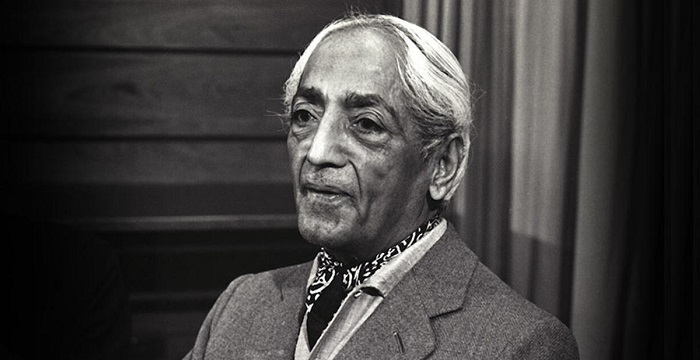The Trap of Habitual Thinking
Workplaces are mostly places of habit, drudgery, and patterns. Both the employees and leaders generally become trapped into the patterns of thinking and responding based on past experiences, organizational cultures, and social conditioning. Such percussion may reduce creativity, play a hindering role to innovation, and induce inappropriate stress and conflict.
J. Krishnamurti observed that the mind is “heavily conditioned by society, culture, family, and past experiences,” and that true freedom requires us to unlearn these patterns.

His teaching was that habitual thinking based on remembering, judging and automatic answers will bring division and conflict to ourselves as well as to others. At the work place, this reflects to the avoidance of change, fear of failure and failure to listen and cooperate.
The Power of the Present Moment
The fundamental understanding communicated by Krishnamurti is that the true transformational experience occurs in the moment when we are in full consciousness and attention to what is occurring now, not distorted by the influences of the past, nor the worry of the future.
He said: “When we are in alignment with the present moment, whatever it might be, without any resistance or avoidance, fear and anxiety dissolve and we feel profound peace deep inside as we are playing the role of observer.”
This state of presence is not passive; it is a dynamic, alive awareness that allows us to respond to challenges with clarity and creativity. In the workplace, present-moment awareness can transform meetings, decision-making, and interpersonal relationships.
Techniques for Cultivating Present-Moment Awareness
Based on the teachings of Krishnamurti, the following are down-to-earth methods that can guide employees and leaders to be present and find a way out of habitual thinking:
1. Sit Quietly and Observe Without Force
One should start in either lying or sitting down and not trying to relax or focusing their attention. You merely permit yourself to be there in any thoughts, your feelings, your sensations. Monitor your thoughts as they happen without critical observation and shutting-down. take a notice of what you are thinking of, and ask yourself why you think about this thought. This method develops what is termed as choiceless awareness, that is being present without being compelled to act out of habit.
2. Notice and Question Your Patterns
As you observe your thoughts and feelings, look for recurring patterns—ways you habitually react to stress, criticism, or change. Instead of acting on these patterns, simply notice them. Ask yourself: “Why does this thought or feeling arise?” This inquiry leads to insight and self-understanding, helping you break free from automatic responses.
3. Practice Acceptance and Non-Resistance
Krishnamurti explained that acceptance is not approval and not to be a passive one but rather to understand what is being experienced at that moment without opposition. As you await a situation of challenge in your workplace, take a stop, and watch how you react. Are you able to accept the way things are without bothering to change it or escape it? This acceptance leaves room to responses in a creative, non-habitual way.
4. Cultivate Awareness at the Core
Krishnamurti explained that acceptance is not approval and not to be a passive one but rather to understand what is being experienced at that moment without opposition. As you await a situation of challenge in your workplace, take a stop, and watch how you react. Are you able to accept the way things are without bothering to change it or escape it? This acceptance leaves room to responses in a creative, non-habitual way.
5. Embrace Open-Ended Inquiry
Krishnamurti stimulated a condition of ever-unending questioning, learning that is not conceived of as already known. At work this comes to mean that relations must be observed with curiosity and open mind, as opposed to some old solutions or assumptions. Listen, ask some questions and be open to new possibilities.
6. Let Silence and Stillness Unfold Naturally
Do not force it, rely on some sort of moments of silence and stillness during the day, and don t feel pressured to engage in meditative practice, as it is more of a place where your mind can relax and your awareness can become more fully formed. Instead of this stillness being flat, it is dynamic and creative, intelligent, producing creativity and understanding.
The Impact on the Workplace
Present-moment awareness leads to a change in the workplace when it is practiced by both the employees and leaders. The meetings are more goal-oriented and interactive, disputes can be solved more harmoniously, and innovativeness blossoms. This makes people less responsive, more resilient and flexible to adapt to change.
Krishnamurti’s teachings remind us:
“Freedom from psychological conditioning is essential to achieving a life of genuine insight and compassion, free from prejudice and automatic responses.”
Expanding our awareness and living in a state of presence, we escape the boundaries of habitual thought and we open the way to a more vibrant, creative and harmonious working relationship.
away.center works to promote on-purpose existence through environments of work that do not merely encourage working in the moment, but also live in the moment as practice-of-life.
Conclusion
In a world of to-do lists, status, and unending noises, it can be radical to be present. But as Krishnamurti reminds us: real liberation is paying attention: not reacting, not recalling, not getting ahead. Returning to the present, we also have to be returned to clarity. And out of clarity will better decisions, healthier relationships and working spaces flow naturally.
One does not have to make work mechanical. It can be living.
We are creating spaces at away.center to welcome this aliveness. When there is not just a meditation method but a way of designing space, of hosting talks and creating culture. Future of work is not faster. It’s deeper.
.svg)
.png)





